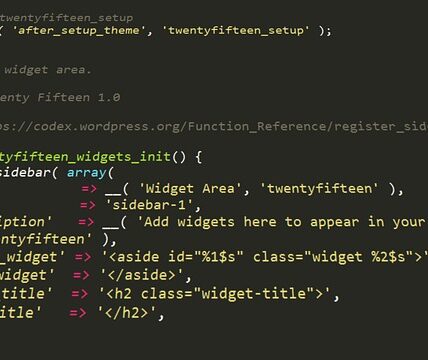Are you ready to deepen your understanding of web development? Are your web application needs changing, and you’re curious if React.js can provide any support? Or, have you heard about React and wondering what it is and what it can do?
React.js is a JavaScript library which simplifies the development of user interfaces. It is designed with scalability and performance in mind, and used by major companies like Instagram, Airbnb, and Dropbox. React is built by Facebook, and is proving to be an increasingly popular tool to build high-performance products across the web. Popular web development blogs such as Smashing Magazine and Sitepoint have lauded the library for its ability to create dynamic user interfaces at lightning speed.
In this article, you will learn about the features and capabilities of React.js, and how it can be used to create dynamic web applications with ease. We’ll explore the different components of React, and take a look at the advantages of using the library. Moreover, we’ll discuss the benefits of using React for development, and explain how it could be used to improve your web application development and user experience.
React offers a simple and intuitive way to build complex user experiences. We’ll discuss the React Component model, and take a close look at how it is used to create reusable and extendable code. We’ll explore the fundamentals of React – including the virtual DOM, props, and states – and how they can be used to create dynamic applications. Finally, we’ll take a look at how React can be used to build mobile applications, as well as with modern frameworks such as ES6 and the Flux architecture.
Definitions:
React.js is an open-source JavaScript library, powered by the engineering giant, Facebook. It’s designed to create user interfaces, or UIs, for single-page applications. React.js allows developers to create large web applications that use data and can change over time without reloading the page. It’s also used to power mobile apps, and one of the leading open-source projects in the world.
The main feature of React.js is its virtual JavaScript DOM, or document object model. It makes it possible for the software to cache changes from user interactions and makes sure that all the data is kept up to date without requiring page refreshes. This makes React.js fast, efficient, and powerful.
Additionally, React.js features an efficient component-based architecture which helps to increase productivity when developing complex user interfaces. Components are small chunks of code that are isolated from each other, making it easier to build individual parts of the page or app. Components also allow a team of developers to work on separate parts of the same page, which can lead to faster development times.
Another major feature of React.js is JSX, a special syntax for creating elements in HTML that could normally only be done with JavaScript. It makes it easier to read and write code. JSX can also be used to render the React components to HTML.
Finally, React.js also includes the JS runtime engine, which efficiently compiles the code. This engine allows user interfaces created in React.js to render quickly and efficiently, making it a great library for building web applications.
An Overview of React.js
What is React.js?
React.js, an open-source JavaScript library created and maintained by Facebook, is used to develop user interfaces (UIs). It allows developers to create components, or modular pieces of user interface, which can be reused, modified, and shared with other developers. React offers great performance due to the concept of virtual DOM, where the UI is rendered as lightweight JavaScript objects that are kept in sync with the actual DOM.
Advantages of React.js
React.js can help developers reduce development time and improve accuracy with its reactive programming approach. It enables developers to create powerful, intuitive UIs quickly and without the need for extensive coding experience or complex coding instructions. React also permits cross-platform development, making it possible to make web apps available across multiple platforms.
React is lightweight and easy to learn. It has a few simple rules of use, such as the use of JavaScript or JSX to write components. JSX is a markup language that provides a syntax for writing HTML-like syntax in JavaScript. By using this language, users don’t have to learn HTML, creating a more efficient learning curve for beginners.
React.js also simplifies the debugging process. When dealing with issue debugging, React supplies various features, similar to React Developer Tools as well as component stack traces. It efficiently helps to identify bugs and diagnose problems with ease as compared to other frameworks.
React.js is also highly flexible when it comes to UI modification. Because of the virtual DOM, any changes made to the UI can be reflected in the code without any major modifications. This is helpful for developers who want to quickly modify the look and feel of the UI without wasting time.
Features of React.js
To mention a few popular features in React.js:
- Uses components approach
- Joins the best of ES6 and HTML
- Enhances script readability
- Provides server-side rendering
- Promotes reusable components
- Offers unidirectional data flow
- Uses the virtual DOM
Developers choose React.js to develop modern, scalable, and high-performance web and mobile UIs. It facilitates faster development, higher scalability, and better user experience. All of these features provide a significant benefit to developers and create an ideal environment for creating React applications quickly and efficiently.
Components and Props of React.js
React.js is an open-source library for building user interfaces. This library is commonly used by web developers to easily build dynamic and interactive user interfaces, namely web, mobile, and desktop applications. The main advantage of React.js is that it uses a component-based approach, meaning developers can separate complex chunks of code into small components and reuse them as needed.
Creating Components with Props
A component is a reusable element that can be used in various areas of your application. In Reactjs, components are created using ES6 classes or functional components — with the use of React Hooks. Components are created using props, short for properties. Props are data that components can receive from outside and use when rendering the view. For example, a button component would receive an “onClick” prop, where the associated callback function is passed. This way, components remain reusable and extensible, making our work more efficient.
Rendering Data with State
Alongside props, React also makes use of state. Think of state as the internal data or stored property of a component. This data allows a component to manage its internal state and render it on the user interface. State is an object which contains all the data that needs to be managed within a component. When the data changes, React automatically updates the affected components in the UI.
Passing Data Between Components
Props and state are used not only to render your user interface, but they can also be used to pass data between components. Imagine a parent and child component, where the parent passes some specific data to a child component. By using props as a conduit, you can ensure that the data flow goes in the correct direction. If something changes in the child component, the parent can use callbacks to notify the parent about those changes.
Conclusion
To conclude, React.js is an extremely powerful and popular library for creating user interface components. It enables web developers to build dynamic and interactive user interfaces with ease. It uses props and state to pass data into and out of its components, and keeps the components easily extensible. Thanks to the flexibility of its design, React.js is being used in many large-scale projects around the world.
Using React.js for Building Web Apps
Using React.js for Building Web Apps
React.js is an open source JavaScript library for building user interfaces, developed by Facebook and Instagram. React.js enables developers to create large web applications that can change data without reloading the page.
Advantages of using React.js
React.js is an efficient and flexible tool for creating dynamic user interfaces, which allows developers to create interactive UIs for web applications. React.js allows developers to quickly build interfaces in a declarative and reusable way, with components that are easy to maintain, scalability and reliability. React.js is helpful for developers who don’t want to write complex logic in their apps, because it allows them to organize their code in a more manageable way. Furthermore, React.js enables developers to render their UI into HTML, making it easier for them to create dynamic web apps.
Disadvantages of using React.js
Despite its many benefits, there are some drawbacks to using React.js. Since React.js relies on transformation of data into HTML, it requires a more sophisticated understanding of the HTML, JavaScript and CSS before developers can use it effectively. Furthermore, due to the lack of a unified platform, developers may have difficulty debugging React.js applications, since the code gets spread across multiple files, making it difficult to debug the application. Additionally, since React.js is based on JSX, a custom syntax, there may be an initial learning curve for developers, making it more of a challenge to adopt this technology.
Thus, React.js is an efficient and flexible tool for creating dynamic user interfaces. Despite some of its drawbacks, React.js provides many benefits for developers who want to create complex web applications that can change data without reloading the page.
Conclusion
Thought-provoking question: How will React.js affect web development for the foreseeable future?
Since its introduction in 2013, React.js has become one of the most popular JavaScript libraries used in web development. It has made it easier to create user interfaces, improve reuse of code, and achieved a higher level of efficiency. But more than that, React.js has made web development more efficient and user friendly, allowing developers to create stunning web applications. It is easy to see why this code library has become so essential to modern web development.
For those who are interested in learning the ins and outs of React.js, or simply keeping up with the latest news, following this blog is an invaluable source of knowledge and insights. We are committed to providing our readers with helpful tips and timely updates on React.js, so that you can stay informed of the most recent releases.
For a better understanding of React.js, we have compiled a few frequently asked questions below:
What is React.js? React.js is an open-source JavaScript library used to create interactive user interfaces. It helps developers build complex user interfaces with a simpler syntax that is easy to maintain.
Is React.js only useful for web development? React.js is mainly used in web development for creating interfaces and user experiences, but it can also be used for mobile development purposes.
What is the benefit of using React.js? React.js provides developers with reusable components and a virtual DOM which increases performance and makes it easier to maintain code.
What are the disadvantage of using React.js? The main disadvantage of React.js is the amount of time that is needed to learn the library, as well as its steep learning curve.
What browsers does React.js support? React.js is supported by all major web browsers, including Chrome, Firefox, Safari, Edge, and Internet Explorer (Version 11 and higher).
We hope that this article has helped cleared up any confusion you may have about React.js. Whether you are a casual web developer, or a seasoned expert, React.js is an invaluable tool for creating dynamic and engaging web applications.




